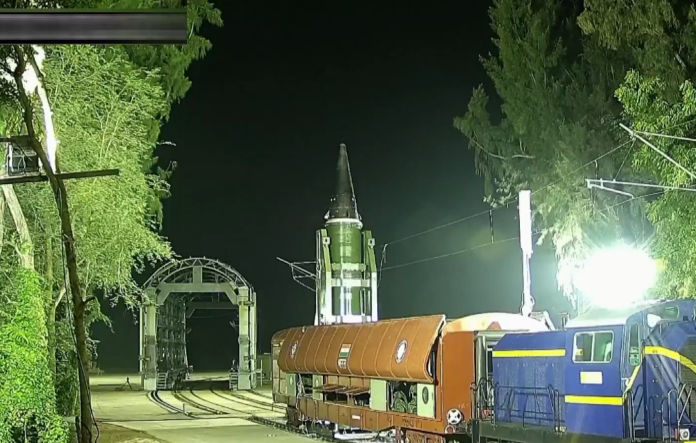India has successfully test-fired its nuclear-capable Agni Prime missile, Defence Minister Rajnath Singh announced on Thursday, sharing visuals of the powerful lift-off. What makes this test historic is not just the missile itself but the fact that it was launched from a mobile railway-based platform, making India one of the few nations alongside Russia, the United States and China to achieve such a capability. The Agni Prime, with a range of 2,000 km, was launched from a specially designed rail-based mobile launcher that can travel across the Indian Railways network without preconditions, offering shorter reaction times and greater mobility. With nearly 70,000 km of railway tracks, India now gains a significant strategic advantage in terms of reach and flexibility, as the system allows missile launches from remote areas without road infrastructure support.
The rail-mounted system offers the military a vital edge by enhancing concealment options. Missiles can be hidden inside tunnels to evade enemy satellite tracking and deployed swiftly when required, providing an element of surprise in combat situations. It also increases the number of possible storage and launch locations, reducing vulnerability to enemy attacks on traditional military bases. The development comes at a time when India is focusing on strengthening deterrence capabilities against regional threats, particularly after Pakistan’s recent use of drones and missiles targeting Indian military facilities.
However, experts highlight that rail-based launchers have their limitations. They are bound by the railway track network, which could be sabotaged during wartime, and do not always allow for the precise launch conditions modern missiles require. Yet, the strategic flexibility they provide is considered invaluable in a nuclear environment where fixed missile silos can be easily targeted by adversaries.
Historically, the Soviet Union pioneered rail-based missile systems in the 1980s with its RT-23 Molodets ICBM, while the US followed with its Peacekeeper Rail Garrison programme before shelving it in the 1990s. Russia continues to retain such capabilities, recognising the advantage of leveraging its vast rail network. By joining this exclusive group, India has added an additional layer of resilience to its nuclear deterrence, ensuring its missile arsenal is harder to detect and neutralise in case of a conflict. The Agni Prime test from a railway launcher is therefore a milestone in India’s defence preparedness and a strong signal of its evolving strategic capabilities.



